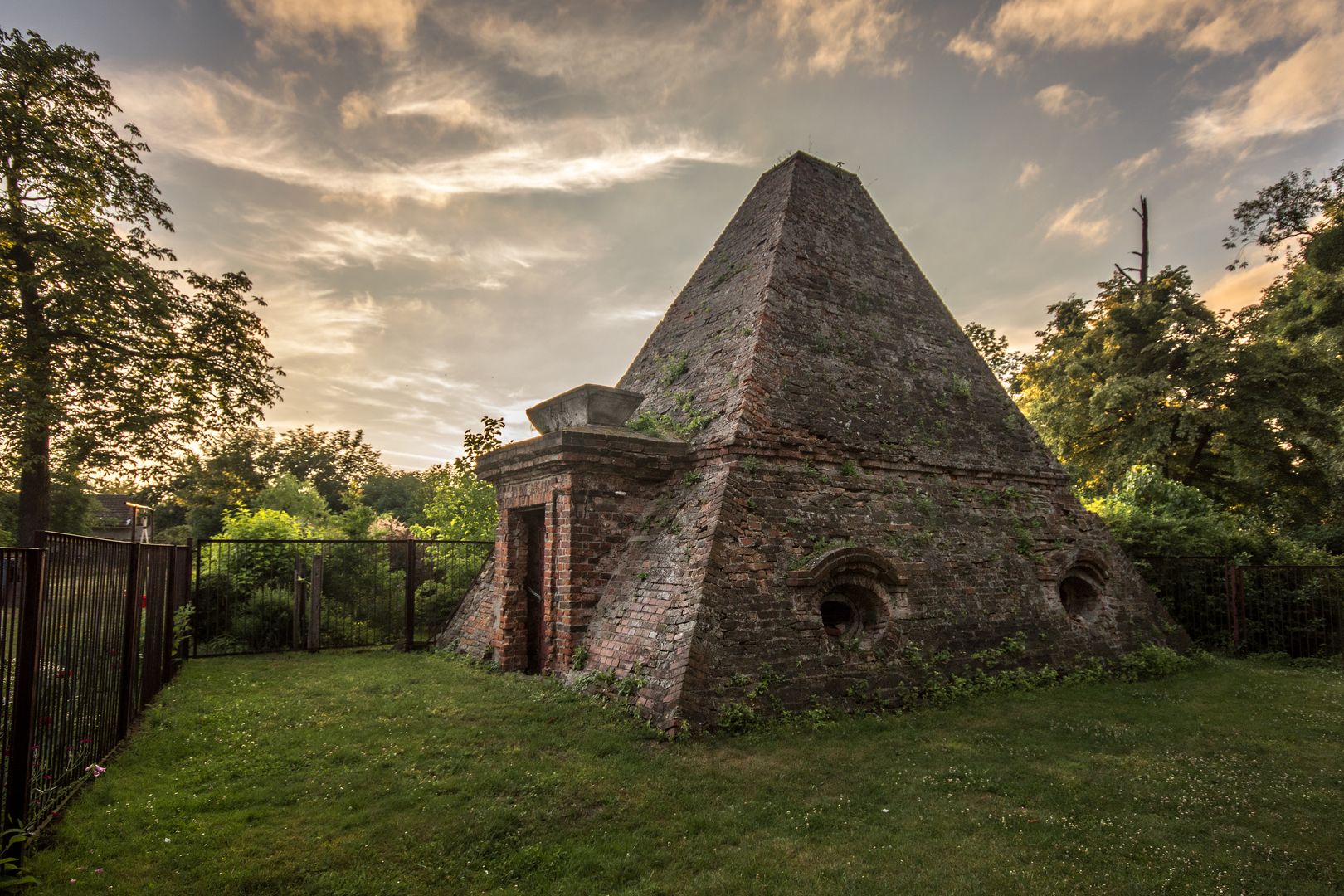The pyramid in Rożnów
6.64

Overview
The pyramid in Rożnów is a historic pyramidal tomb located in the village of Rożnów in the Opole Voivodeship, built in 1780 on the initiative of Carl Adolf August von Eben und Brunnen. The tomb was designed by Carl Gotthard Langhans, who is famous for works such as the Brandenburg Gate in Berlin. The nine-meter-high structure is a miniature of Egyptian pyramids, and its distinctive shape was intended to promote the mummification of bodies after death. At the front, there is a projection with a cornice, on which tombs with cartouches and coats of arms of the von Eben family are placed. The tomb was damaged in 1945 by soldiers of the Red Army, which testifies to the turbulent history of the region. Initially, the closest family of the founder was buried there, and over time also the new owners of the von Rose estate and their relatives, a total of 28 people, especially members of the von Eben family. Among those buried are Christian von Möhring, Carl's father-in-law, and his wife Anna, as well as Hans Adolf von Eben, the builder's father. The pyramid was entered into the register of historical monuments of the Opole Voivodeship on October 12, 2003, which emphasizes its architectural and cultural significance. Interestingly, the structure not only represents local history but also reflects the influences of Egyptian architecture in a European context.
Location
2025 Wizytor | All Rights Reserved